Disciplinary Letter
-
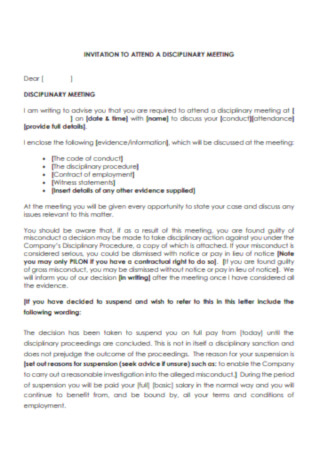
Disciplinary Meeting Invitation Letter
download now -
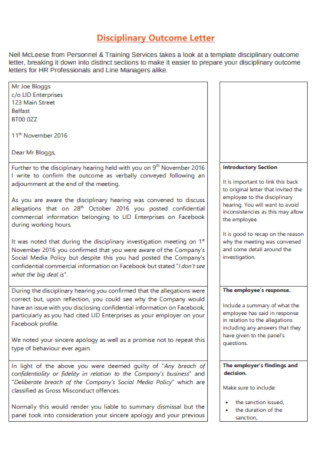
Disciplinary Outcome Letter
download now -
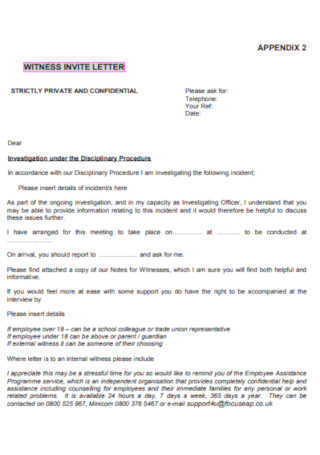
Disciplinary Witeness Invite Letter
download now -
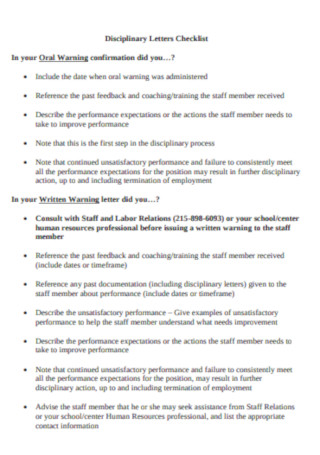
Disciplinary Letters Checklist
download now -
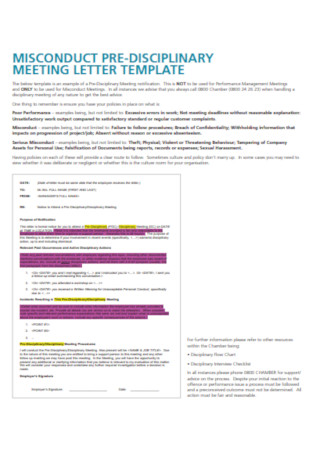
Pre-Disciplinary Meeting Letter
download now -
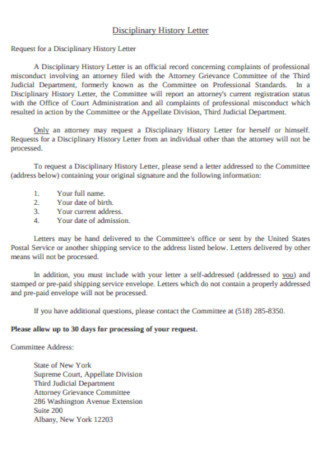
Disciplinary History Letter
download now -
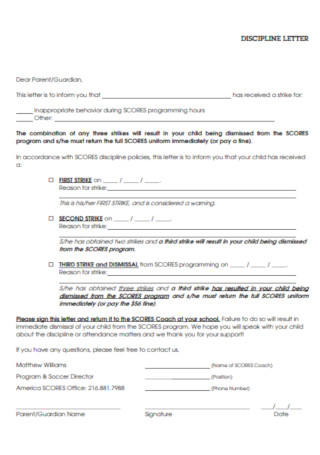
Sample Discipline Letter Template
download now -
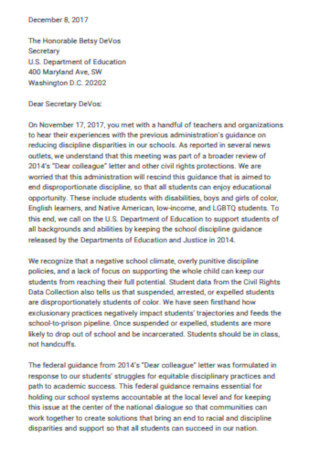
Basic Discipline Letter Example
download now -

Discipline Letter Format
download now -
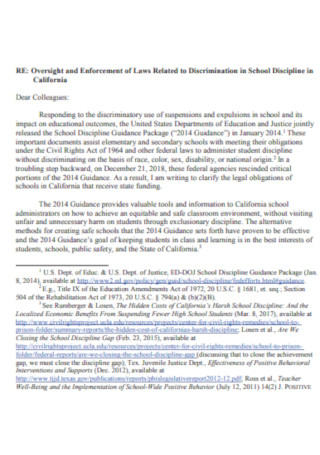
School Discipline Letter
download now -
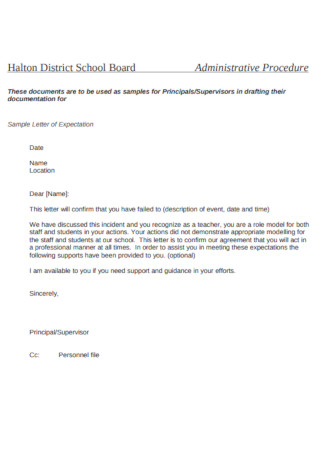
Progressive Discipline Letter
download now -
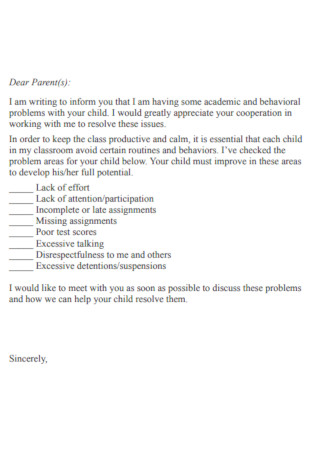
Parent Disciplinary Letter
download now -
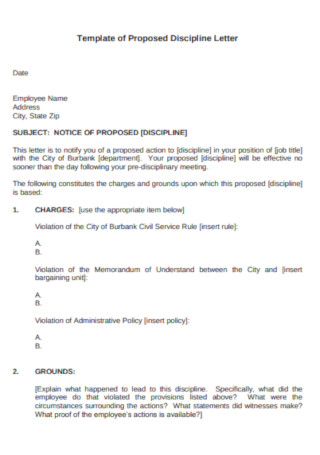
Proposed Discipline Letter Template
download now -
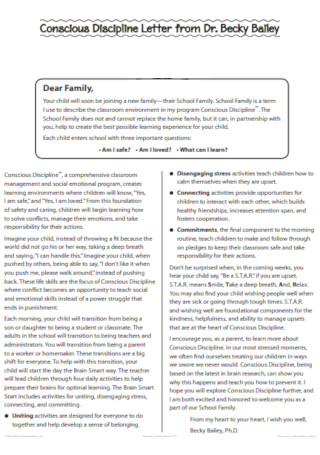
Conscious Discipline Letter
download now -
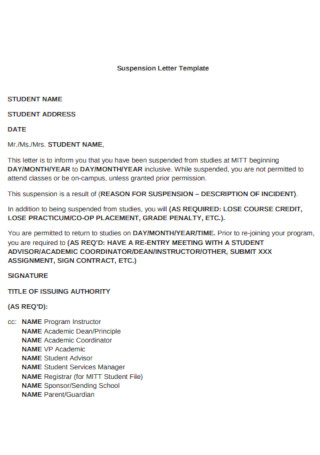
Sample Student Disciplinary Letter
download now -
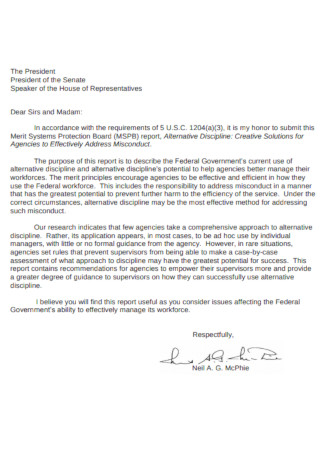
Alternative Discipline Letter
download now -
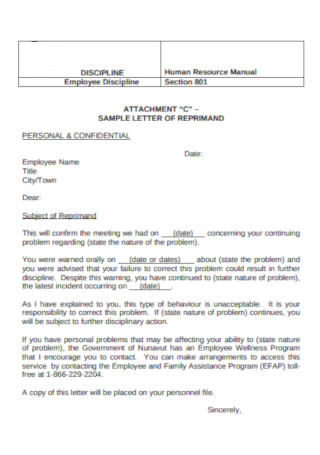
Employee Discipline Letter
download now -
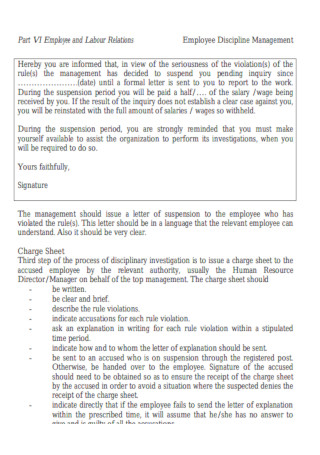
Employee Management Discipline Letter
download now -
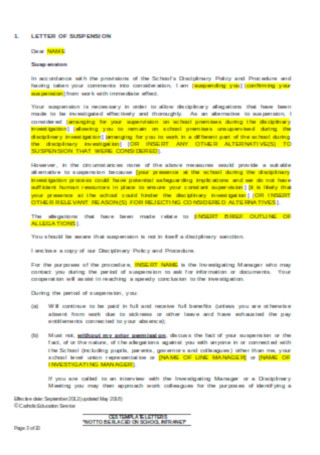
Formal Disciplinary Letter
download now
FREE Disciplinary Letter s to Download
Disciplinary Letter
What Are Disciplinary Letters?
Why Should You Write a Disciplinary Letter?
What Are the Basic Parts of a Disciplinary Letter?
How to Write a Disciplinary Letter
FAQs
What are examples of disciplinary problems in the workplace?
How many warnings do you have to give to an employee?
Who writes a disciplinary letter?
What Are Disciplinary Letters?
A disciplinary letter is an official document prepared by HR and is sent to employees who committed certain violations or offenses in the company. This form of a misconduct warning letter is crucial to bring notice to the employee that the action being done was wrong as well as what consequences would happen next. And the common process is to conduct a verbal warning first, send the disciplinary letter next, and eventually deal with termination if the employee still continues to violate the company policies after the final warning.
According to Small Business Trends, 46% of employees didn’t report bad behavior at work because they believed that no action will be taken.
Why Should You Write a Disciplinary Letter?
Negligence to the company policies that were already introduced excuses no employee. So calling out a worker for misconduct in the form of a letter is standard to maintain an orderly organization. But the question is, why is a disciplinary letter important? In this section, learn the top reasons why disciplinary letters play a great role in organizations.
To Ensure Employees Are Accountable and Compliant
Whether the problem with an employee is lateness, absenteeism, disrespectful behavior, poor performance, or any other type of misconduct, disciplinary letters define the problem statement. So at least mentioning the problem will help employees be aware and accountable for their actions. Also, the letter aims to remind everybody about being compliant with the company handbook and rules. No special treatment should be involved.
To Finalize the Appropriate Disciplinary Consequences
Harcore punishment such as immediate termination is not the consequence to write down in a disciplinary letter. The letter still serves as a notice form so be sure to set the appropriate consequences according to your company policy. The valid action could be that the employee loses membership to a special company perk or be suspended from work for a few days but will eventually come back. The consequence should just be enough of a reminder for the employee to do better next time.
To Maintain Fairness in the Workplace
Disciplinary letters ensure that unprofessional behavior and poor discipline are a big no-no in the workplace. And creating the letter goes to show that the employer is not overlooking these matters. Remember that according to a survey, 46% of employees didn’t report bad behavior at work since they believed no action would follow. Hence, HR can prove about being fair by calling out unprofessionalism and keeping those who remained obedient in good hands. More so on fairness, the employee being talked about in the letter can still explain her/his/their side of the story after receiving it.
To Follow a Protocol and Mitigate Legal Risks
Writing disciplinary letters is not only a standard HR practice but also a professional way of preventing legal risks. It is safe to assume that a disciplinary letter can be a prelude to termination if the employee keeps violating company policies. Hence, it is a formal process to take rather than firing someone right away. If no proper disciplinary action was involved and you fire an employee immediately, the employee may file for dispute. So it is better to be safe in mitigating legal risks as much as possible with a thorough protocol.
To Expect a Positive Change from a Person
When employees receive disciplinary letters, they get a second chance to do better. In fact, warnings can lead to an effective performance improvement plan wherein employees fix their mistakes and not commit any misconduct next time. And the best part is you won’t expect positive changes from employees alone. Disciplinary letters can be used for all sorts of organizations where people need to be called out whether the person is a student, teacher, camper, government official, or any staff member.
What Are the Basic Parts of a Disciplinary Letter?
Indeed, a disciplinary letter is important but if the letter itself lacks the key elements that make up a complete disciplinary letter, then the document won’t be that much of help. So upon writing a disciplinary letter, make sure your document contains the following significant parts:
How to Write a Disciplinary Letter
In the workforce, disciplinary actions would improve when writing disciplinary letters to those who committed any misconduct is standardized. Thus, you should be very careful as to what set of data you have inside the letter because you are about to reprimand or call out someone’s actions. But never fret because you can write an effective disciplinary letter easily by following these steps:
Step 1: Assess the Situation Meticulously
First of all, what happened? Before even writing the disciplinary letter, it helps to assess the whole situation carefully. If you got a report that an employee was being harassed by a co-worker, then you should investigate and see if it is true or not. For your investigation report, you can interview witnesses of the event, base on the company’s CCTV footage, or perhaps, hear the two sides of the story between the victim and the perpetrator. The thing is you need proof that the employee performed an illegal act so that there is a need to write the letter.
Step 2: Take Advantage of Sample Disciplinary Letters
Free sample disciplinary letter templates are available for you to optimize. Rather than making letters out of scratch, samples are already preformatted. So you only complete the missing parts in finishing a disciplinary letter. You can edit the format, design, and content of your letter. Also, loads of options are available such as a sample disciplinary letter for unprofessional behavior, a warning letter for misconduct template, a tenant warning letter template, a warning letter to employee template, and more.
Step 3: Denote the Parts of a Disciplinary Letter
Date, employee name, subject, introduction, etc.—you name it. Insert the basic parts of a disciplinary letter in your template, as discussed earlier. Without them, your letter could be ineffective in fulfilling its purpose. And if you like to add more elements that you think would solidify your letter’s content, you can do so. However, only relevant subtopics should be highlighted in your document.
Step 4: Don’t Take It Personally
Although you can be personal in terms of addressing the person politely in a disciplinary letter. Don’t take it too personally that you are already criticizing someone’s morale or personality. Disciplinary letters are still professional business letters. So you still have to keep it professional by not writing comments that are below the belt. Simply focus on what the offense was, why it is wrong, and what can be done to compensate for it. Be objective no matter what.
Step 5: Aim for an Easy-to-Read Comprehensive Letter
Reread what you wrote and be sure to improve its composition and comprehensiveness. The key is to come up with a letter that is easy to follow so that recipients won’t have a hard time understanding the letter’s message. Otherwise, hard-to-read letters may get misconstrued and would cause an issue. So check if you were able to say the necessary things and that the overall thought was excellent. After a careful evaluation, only submit the letter to the employee when everything is correctly composed.
FAQs
What are examples of disciplinary problems in the workplace?
Some workplace disciplinary issues include lateness, unauthorized absences, discrimination, bullying, misuse of the internet, poor performance, theft, indecent behavior, and other general or criminal offenses.
How many warnings do you have to give to an employee?
Generally, the golden rule is to offer at least one verbal warning followed by two written warnings before dismissing an employee. But for severe misconducts such as murder, dismissing an employee right away and without any printable notice is acceptable.
Who writes a disciplinary letter?
Disciplinary letters are often written by HR, an employer, or anyone of authority to discipline members of an organization who need to be taught a lesson.
Disciplinary letter writing should come off easy for you now that you have sample disciplinary letter templates for grabs at Sample.net. So don’t ever tolerate anyone who keeps doing any misconduct in your company or organization because it will eventually risk the rest of the people who are actually doing well. And if recipients can’t handle a disciplinary letter, then that is the time to start setting a termination notice as your trump card. And Sample.net has loads of other templates available for professional or personal matters. Download now!
